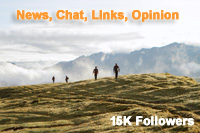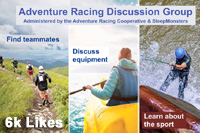Himalayan Challenge Marathon
Day Three, Part Two: From the highest mountains down to villages in the jungle
Jacqueline Windh / 05.11.2013


I’m writing this post in two parts because this day - one of the most amazing days of my life - seems much bigger than one single day. We saw so much…
I started the descent from Molle, thinking that Jorge would soon catch me. I stopped to re-lace my shoes for the downhill, and still he didn’t catch me. He hadn’t looked great on the trail up top, so I figured he must be hurting somehow today (I later found out he had some painful blisters).
I was very grateful that I had been able to borrow a trekking pole from one of the other racers, which I had used on Day Two and again today. It saved the quads on the uphills, and it definitely provided stability and save the knees on the steeper downhills. We were no longer on a stone road, accessible to Jeeps, but now on a narrow and rough stone path. Mr. Pandey had told us that this whole section was not accessible to vehicles, so once we started reaching the villages below the locals would be very happy to see us, as they receive very few visitors.
The stone path was extremely rough - again the “cobblestone” was really just rocks of miscellaneous size and shape all laid together in a somewhat flat way. In many places the stone trail was completely washed out, and the route was steep ruts in the dried mud, barely wide enough for your feet to pass one another. The ruts were in some place half a metre deep (a foot or two) and in others more like two metres deep (6 feet)!
I saw no other racers between the top, at Molle, and the finish line. The route was really well marked - Mr. Pandey’s team had red arrows spray-painted with amazing frequency (you usually could see at least five from any point on the trail). At first it seemed overkill… but when you are alone for so long, and start becoming paranoid about being off-track, those red arrows were a great comfort. I came across a few local boys on the trail - some carrying burdens, others carrying nothing at all, and a few herding a trio of ponies up the mountain.
But mostly I saw no one, and no signs of habitation, for over an hour. I had quickly descended into much lusher country - more vegetated, and soon very jungly, with the roaring whir of insects all around and birds calling from the trees above. I had left Molle at noon, and by 1pm I could hear a river roaring far below, and could glimpse a few rooftops through the mist at the river’s edge.
By 2pm, not much had changed. I was still on a steep and rough descent, I was still in the jungle, I could still hear a river far below and catch glimpses of a village. By half an hour later, though, I had encountered the village of Upper Siri Khola.
While people’s lives here seem very basic, they are not living in anything that I would call poverty. The houses are beautiful, painted in bright colours, and all with rows of flowers in front and around. The people are dressed well, the men in pants and shirts but the women in brightly coloured traditional dress (a few speaking on cell phones as they walked), and the children in English-style school uniforms. They looked at me in curiosity as I passed, but if I smiled and said “Namaste” they would return a “Namaste” back to me with a big smile. When I asked permission to take photos of them, they nodded their assent shyly - one even offering to take a picture of me with her companions. Their English was very basic, but she was able to ask me which button to press (“How click?”) and to tell us “Cheese” as she took the picture.
The stone path continued switchbacking through the village, but Mr. Pandey’s arrows had us cut the switchbacks, following extremely steep and rough knee-nackering stone stairways down, down, down. I finally reached the main village of Siri Khola, and the aid station there. A suspension bridge took me across the river: 6 km to go.
The final stretch was on a track that turned into a rough jeep road heading to the village of Rimbik. I had started at river level at the bridge, and my road remained flat, following the contours of the steep valley side. But the raging river plunged deeper and deeper below me - by the time I reached Rimbik, only 6 km later, I was 600 m above the river.
I was pleased to be feeling great as I ran into Rimbik. This was the first day that I was slower than my estimated time, hoping for around 8 hours and finishing instead in 9:20. But I was on top of the world - or at least I had been! It felt like I had lived two full days in those nine hours, first up on the ridgeline surrounded by the highest mountains on earth, and then smiling and waving at the villagers in the remote jungle villages.
There were some very impressive performances from the top runners today. There were a few from the group who were not completing the whole stage race, and who had come only to run the marathon - so there were 38 starters in the field. Martin and Marit again took first and second place. Rex Whittle (UK) also impressed the field. Rex is 73 years old, and this is the 7th time he has participated in the event. He finished the marathon today by headlamp, in 12:55.
Here are top three:
Men:
1. Martin Cox (UK) 4:17 - 1st overall
2. Dan Dosedel (USA) 5:27 - 3rd overall
3. Greg Barton (UK) 5:46
Women:
1. Marit Holm (Norway) 5:21 - 2nd overall
2. Clare Glazebrook (UK) 6:39
3. Thamar Houliston (South Africa) 7:48







 SleepMonsters
SleepMonsters



